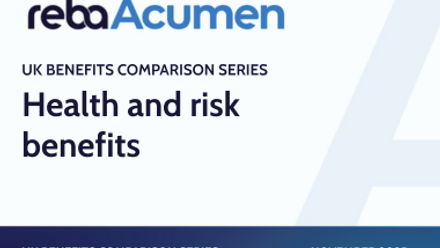Rethinking PMI: Supporting employees with chronic conditions in new ways
Private medical insurance (PMI) is one of the UK’s most valued employee benefits, offering fast access to treatment and easing NHS pressure. Yet for your employees with chronic conditions, it often falls short - exclusions can leave those most in need without support.
Exclusions for pre-existing or chronic illnesses are a long-standing feature of the market, designed to protect insurers from increasing costs and to balance risk within their portfolios.For employers, however, this creates a tension.
The very people most likely to need health support can often be the ones excluded. With chronic conditions such as diabetes, cardiovascular disease and mental health challenges (drug and alcohol addiction) becoming increasingly common across the workforce, exclusions risk undermining the inclusivity of employer wellbeing strategies.
The question is: how can organisations still ensure those employees benefit from meaningful health support?
Why it matters for employers
Chronic illnesses are now one of the biggest challenges for both individuals and businesses. Around one in four UK adults is living with at least one long-term condition, and that proportion rises significantly with age, according to the Office for National Statistics.
For employers, the impact is clear: higher rates of absence, increased presenteeism, and reduced productivity. Left unmanaged, chronic conditions also drive long-term disability claims and recruitment pressures when experienced staff are unable to work.
There is also a cultural and reputational dimension. Employers are increasingly expected to demonstrate that their benefits are fair and inclusive. If PMI is seen as a “perk for the healthy,” it may conflict with wider diversity and wellbeing goals. Forward-thinking organisations are therefore looking for innovative ways to bridge the gap.
Innovative approaches to bridge the gaps
1. Hybrid and supplementary cover
One practical solution is to layer PMI with additional health benefits. For example, cash plans, employee assistance programmes (EAPs), or specialist clinic access can help employees with chronic conditions receive day-to-day support, even if their PMI policy excludes treatment.
A cash plan, for instance, can cover the cost of routine therapies, diagnostic tests, or GP consultations. When combined with PMI, employees have a more rounded package that caters for both acute and chronic health needs.
2. Condition-specific pathways
Employers are also increasingly turning to condition-specific pathways. Digital health tools and specialist providers can be plugged into benefit schemes to provide support for areas commonly excluded from PMI.
For example:
- Diabetes programmes that include remote monitoring and lifestyle coaching.
- Musculoskeletal (MSK) pathways offering app-based physiotherapy backed by in-person clinical support.
- Mental health apps and talking therapies with no exclusion criteria.
These pathways not only help those living with chronic illnesses but also reduce the likelihood of issues escalating into costly acute episodes.
3. Preventive & proactive health support
Exclusions often focus on long-term treatment, but employers can invest in prevention. Health screenings, wearable technology, lifestyle programmes, and proactive physiotherapy can all be funded alongside PMI.
By helping employees understand and manage their health risks earlier, organisations can reduce the likelihood of chronic conditions deteriorating. Prevention also aligns closely with environmental, social and governance (ESG) and wellbeing strategies, demonstrating a genuine commitment to long-term employee health.
4. Self-insured or trust-based solutions
For larger organisations, self-insurance through a healthcare trust can provide greater flexibility. Trusts allow employers to set the rules on what is and isn’t covered, enabling them to fund some of the treatments typically excluded from PMI.
Stop-loss insurance can still protect against very large claims, but employers retain the freedom to shape benefits more inclusively. While this route requires governance and financial planning, it offers a way to balance inclusivity with affordability.
5. Insurer innovation
The insurance market itself is evolving. Some providers are experimenting with more flexible underwriting, such as moratorium policies that review conditions over time, rather than applying blanket exclusions for life. Others are piloting add-ons for specific conditions or building digital health solutions directly into PMI packages.
While change is gradual, these innovations suggest a future where exclusions become less rigid, and PMI evolves into part of a wider health ecosystem.
An illustrative example
Consider an employer with a workforce reporting high levels of musculoskeletal issues. Their PMI scheme excludes ongoing physiotherapy for chronic back pain, leaving many employees unsupported. To address this, the employer introduced a digital physiotherapy app combined with local clinic access.
The results were twofold: employees accessed treatment faster, and the organisation saw a reduction in absence linked to MSK problems. Employees who had felt left out of PMI now felt included in a health strategy tailored to real workforce needs.
Challenges and considerations
While these innovations are promising, there are still hurdles to overcome:
- Affordability: Expanding cover inevitably raises questions about cost, and employers need to balance inclusivity with budget.
- Awareness: Many organisations are unaware of the practical impact exclusions have until employees raise concerns.
- Communication: Employees must understand clearly what their PMI covers, and what supplementary benefits are available.
- Regulation: Insurers remain bound by underwriting rules and the need to maintain sustainable risk pools.
Conclusion: inclusive health ecosystems
PMI exclusions may remain a feature of the market, but they shouldn’t define the limits of employee health support. Employers have an opportunity, and a responsibility, to build health and wellbeing strategies that go beyond the boundaries of traditional insurance.
By layering PMI with supplementary benefits, investing in condition-specific pathways, and exploring flexible funding models, organisations can create inclusive ecosystems that support all employees, especially those with chronic conditions.
Crucially, these strategies must be actionable and measurable. That means identifying gaps, tracking engagement and outcomes, and continuously refining support based on workforce needs. Inclusivity shouldn’t just be a corporate ‘value’, it’s a strategic aim that can drive improved productivity, retention, and reputation.
It’s been long accepted that PMI in no longer seen as a standalone perk, but part of a broader, data-informed health strategy. And it’s an important aspect of benefit suites that ensures every employee has access to meaningful, ongoing care.
Supplied by REBA Associate Member, Barnett Waddingham
Barnett Waddingham is proud to be a leading independent UK professional services consultancy at the forefront of risk, pensions, investment, and insurance. We work to deliver on our promise to ensure the highest levels of trust, integrity and quality through our purpose and behaviours.








